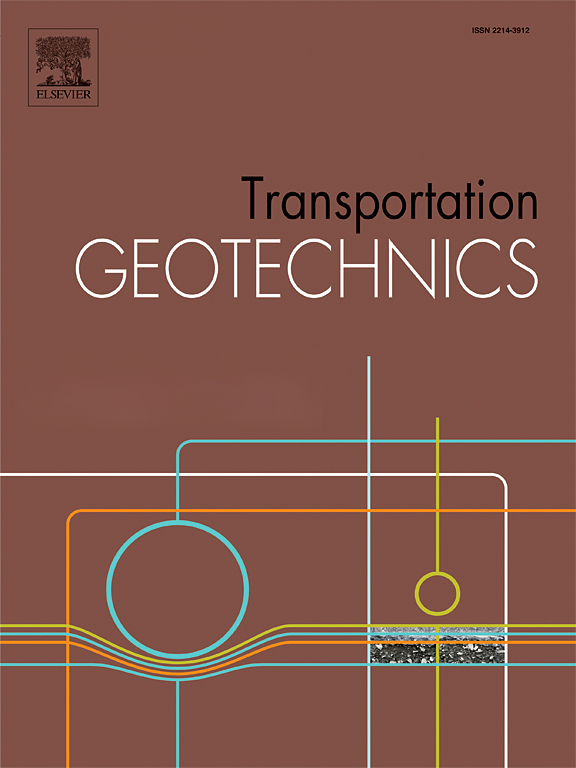Tunnelling-induced nonlinear responses of continuous pipelines resting on tensionless Winkler foundation
IF 4.9
2区 工程技术
Q1 ENGINEERING, CIVIL
引用次数: 0
Abstract
Prevailing analytical approaches for tunnelling-induced soil-pipeline interactions predominantly rely on linear analyses, limiting their applicability in nonlinear scenarios. This study introduces a novel tensionless Winkler solution that accounts for gap formation and soil yielding, validated against three well-documented experiments and demonstrating superiority over existing Winkler solutions. Additionally, plate load tests refine traditional soil-bearing theories for buried pipelines in sand, providing subgrade stiffness and ultimate bearing capacity values pertinent to tunnelling-induced interactions. Parametric studies highlight amplified nonlinearity in pipeline behaviours with increased pipeline flexural rigidity and tunnel volume loss, due to soil-pipeline separation and subgrade yielding. Notably, ignoring gap formation and soil yielding leads to overly conservative estimations of pipeline deflections and bending moments. Higher subgrade moduli increase pipeline strains, while enhanced subgrade bearing capacity above the pipeline prevents soil yielding, rendering its effect negligible, whereas the bearing capacity beneath the pipeline is inconsequential in tunnelling scenarios.
无张力温克勒地基上连续管道的隧穿非线性响应
针对隧道引起的土壤-管道相互作用的主流分析方法主要依赖于线性分析,限制了其在非线性情况下的适用性。本研究介绍了一种新型无张力温克勒解决方案,该方案考虑了间隙形成和土壤屈服,并通过三项有据可查的实验进行了验证,证明其优于现有的温克勒解决方案。此外,平板载荷试验还完善了沙土中埋设管道的传统土壤承载理论,提供了与隧道引起的相互作用相关的基层刚度和极限承载力值。参数研究突出表明,由于土壤-管道分离和路基屈服,管道行为的非线性增强,管道弯曲刚度和隧道容积损失增加。值得注意的是,忽略缝隙形成和土壤屈服会导致对管道挠度和弯矩的估计过于保守。较高的路基模量会增加管道应变,而管道上方增强的路基承载能力可防止土壤屈服,使其影响可以忽略不计,而管道下方的承载能力在隧道工程中则无足轻重。
本文章由计算机程序翻译,如有差异,请以英文原文为准。
求助全文
约1分钟内获得全文
求助全文
来源期刊

Transportation Geotechnics
Social Sciences-Transportation
CiteScore
8.10
自引率
11.30%
发文量
194
审稿时长
51 days
期刊介绍:
Transportation Geotechnics is a journal dedicated to publishing high-quality, theoretical, and applied papers that cover all facets of geotechnics for transportation infrastructure such as roads, highways, railways, underground railways, airfields, and waterways. The journal places a special emphasis on case studies that present original work relevant to the sustainable construction of transportation infrastructure. The scope of topics it addresses includes the geotechnical properties of geomaterials for sustainable and rational design and construction, the behavior of compacted and stabilized geomaterials, the use of geosynthetics and reinforcement in constructed layers and interlayers, ground improvement and slope stability for transportation infrastructures, compaction technology and management, maintenance technology, the impact of climate, embankments for highways and high-speed trains, transition zones, dredging, underwater geotechnics for infrastructure purposes, and the modeling of multi-layered structures and supporting ground under dynamic and repeated loads.
 求助内容:
求助内容: 应助结果提醒方式:
应助结果提醒方式:


